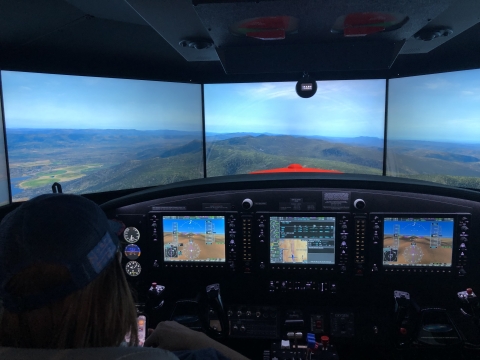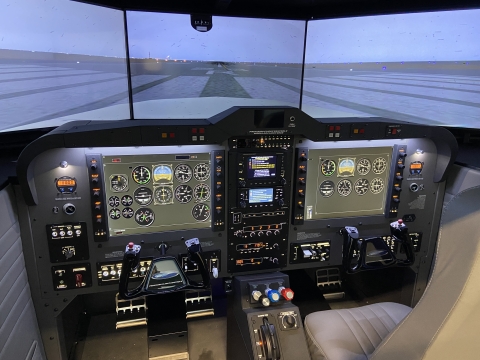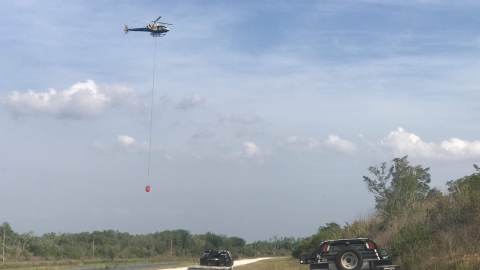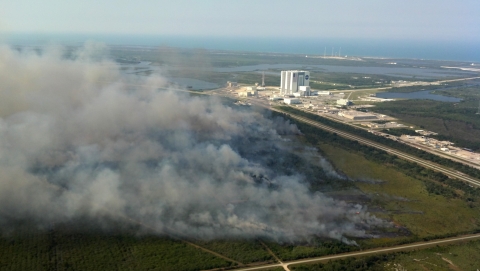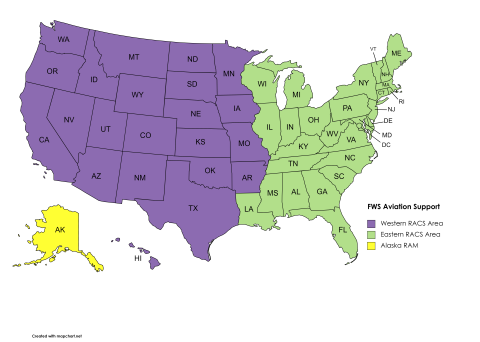What We Do
The U.S. Fish and Wildlife Service’s Branch of Aviation Management administers a fleet of 44 airplanes, 2 helicopters, and 53 Uncrewed Aircraft Systems (UAS), and supports 45 pilots and 64 UAS remote pilots across the country. This is over 58% of the DOI aircraft fleet, 65% of the UAS fleet, and over 60% of the annual flying hours. The Branch employs specialists who provide training, implement a robust safety program, assist with operations to conduct critical wildlife conservation programs, as well as provide oversight for the unmanned aircraft program. The Branch is responsible for Service aviation procurement & acquisition, contract development, aircraft vendor and cooperator approval. Interagency and Departmental aviation policy is developed and established by our office in partnership with the Executive Aviation Sub Committee, National Interagency Aviation Committee, and the Service Emergency Management Team.
Training
Our pilot development and training program includes instructions to prepare our aviators for flying in various environments. Beyond learning to fly our aircraft in a “standard” configuration, many USFWS pilots are also trained to land “off-airport” at remote locations with tundra tires, amphibious floats, or skis. Additional training is provided for flying in mountainous terrain.
Safety
Our safety program follows the Safety Management System model - Policy, Promotion, Risk Assessment, and Safety Assurance. Some aviation safety foci include, but are not limited to: accident prevention, risk assessment, safety reporting, and mishap response. A recent innovation and complement to our safety and training programs is the Inadvertent Instrument Meteorological Conditions Recovery Program, utilizing three Federal Aviation Administration approved full motion flight simulators acquired by the Branch. Utilizing a combination of the flight simulators and classroom instruction, we provide instrument flight and procedures training to enable pilots to safely manage inadvertent flight into clouds or low visibility flight conditions.
Operations
The U.S. Fish and Wildlife Service’s Pilot Biologists are some of the most unique and specially trained employees in the agency. Considered “dual function” positions, pilot biologists are qualified not only as wildlife biologists, but also as aircraft pilots, operating specialized survey aircraft in support of natural resources management objectives.
Wildlife Conservation
Pilot biologists design, plan, coordinate, and implement continental population and habitat monitoring programs that inform wildlife management and conservation actions in the U.S., Canada, and Mexico. Specifically, we conduct low-level surveys and high-altitude remote-sensing missions to monitor the status of waterfowl and other migratory birds, large mammals, and other wildlife. We also conduct radio-tracking surveys, law enforcement and fire reconnaissance flights, field station support missions, wildlife relocation flights, and respond to environmental disasters, including hurricanes and oil spills. We coordinate with other agencies and are known as the eyes-in-the-sky for the U.S. Fish and Wildlife Service, monitoring wildlife populations and natural resources across the breadth of the North American continent.
Pilot biologists in the Migratory Bird Program are responsible for monitoring waterfowl and other migratory bird populations for the purposes of establishing harvest regulations, conducting status assessments, and conserving and managing habitats. Surveys are often conducted at low altitude but may also involve high altitude operations using advanced remote sensing and machine learning technologies. Migratory bird pilot biologists travel the breadth of the North American continent monitoring populations and habitats during critical breeding, migration, and wintering periods. Field operations can be for extended periods of time in relation to biological events and cycles. Migratory bird pilot biologists are fortunate to experience vast and remote landscapes across the continent in a way very few people do. Migratory bird pilot biologists, given their wide geographic distribution and long-range survey aircraft, are often called upon to assist other programs and agencies and to respond to environmental disasters.
Pilot biologists in the National Wildlife Refuge System share many duties with migratory bird pilot biologists but their priorities and responsibilities are directed by those of the Refuge or Wetland Management District to which the dual function position is assigned. Refuge System pilot biologists tend to have more of a Regional of Refuge-focused area of operation, but like migratory bird dual function positions often get called to assist other programs or agencies in other areas. Most dual function pilot biologist positions in the Refuge System are in Alaska.
Law Enforcement
Several dual function positions also exist within in the Office of Law Enforcement. These positions are law enforcement agent-pilot positions. These positions focus on specialized wildlife and natural resources law enforcement activities, providing critical aerial reconnaissance and support, as well as investigating Migratory Bird Treaty Act and Federal Regulation Violations. All dual function agent pilot positions are presently located in Alaska, while the migratory bird biologist pilots provide law enforcement support in the contiguous U.S.
Fire Management
The Services helicopter assists with natural resource projects such as wildlife surveys, invasive inventories, and water sampling, but also plays a role in the fire management mission. In fire management, it is utilized to provide aerial reconnaissance and supervision for both wildfire and prescribed fire missions, delivers water buckets and sling loads supplies and equipment to remote areas, provides a method for aerial ignition on prescribed and wildfire missions, and performs damage assessments of infrastructure and habitat following natural disasters, such as hurricanes.
All-Hazard Response
All-hazard incidents encompass everything other than wildfires and include hurricanes, tornadoes, floods, earthquakes, mudslides, oil spills and any other natural or human caused disaster. USFWS Aviation stands ready to support emergency responders with aviation resources to assist with transport of people and supplies, as well as provide aerial reconnaissance and monitoring. Some of the past events our pilots have support include the Deep Horizon Oil Spill off the coast of Louisiana in 2010, Hurricane Maria in Puerto Rico in 2017, and Hurricane Ida in Louisiana in 2021.
Regional Aviation Compliance Specialists (RACS) and Regional Aviation Manager (RAM)
USFWS personnel can reach out to their Regional Aviation Compliance Specialist (RACS) or Regional Aviation Manager (in Alaska) as their liaison for aviation support from the Branch of Aviation Management. The responsibilities of the RACS and RAM are to develop Service procedures to implement Department of Interior aviation safety policies:
- Coordinating the Service aviation safety and aircraft accident prevention program in concert with the DOI aviation safety program.
- Providing guidance to Service operational units in implementing all aviation safety policies.
- Ensuring that DOI, Service, and appropriate National Transportation Safety Board, and Federal Aviation Administration policy requirements are followed.
Unmanned Aircraft Systems (UAS)
Unmanned aircraft, commonly referred to as drones, have recently been used to fill a specific niche of missions for the Service. Their low cost (compared to traditional aircraft) and the minimal risk involved (no pilot or crew on board) make unmanned aircraft an attractive tool for a variety of field uses in the fields of natural resource management, law enforcement, emergency management, fire management, public affairs, and infrastructure inspections.



